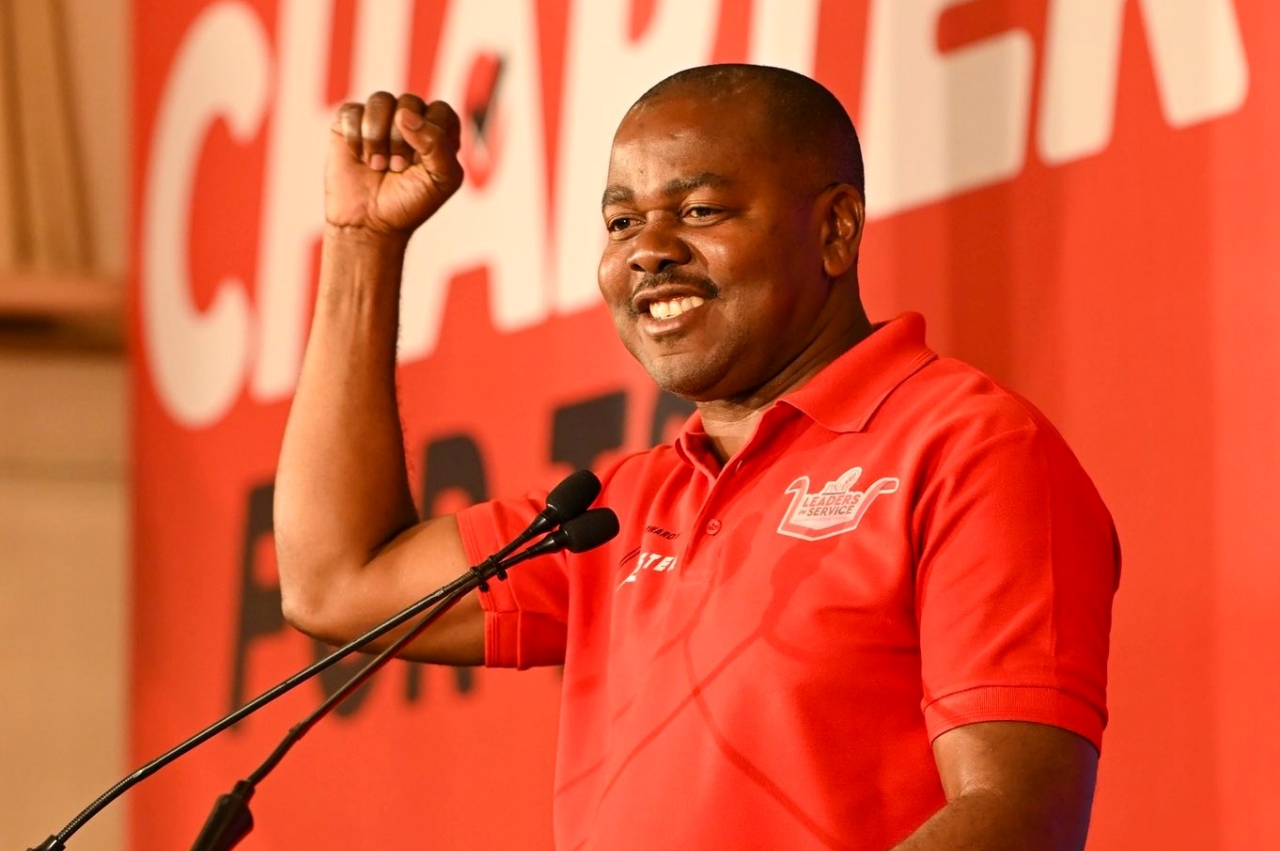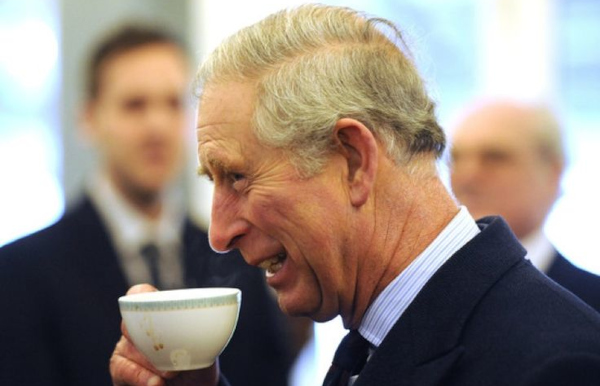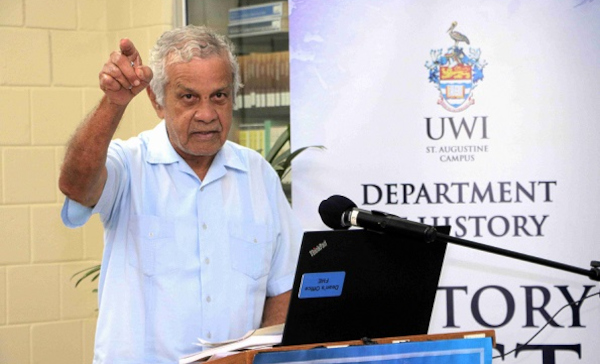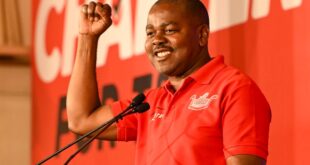“[…] From the moment the chief servant [Makandal Daaga] announced the ‘March to Caroni’, it sent shock waves through the corridors of power. This march challenged one of the pillars of domination, control and oppression of our people, which was laid down by our past colonial ‘masters’—the creation and maintenance of widespread divisions within our society, and primarily between the two major races of Africans and Indians.
“One significant development that took place was Archbishop Anthony Pantin’s stated intention to join the March… When word got out of the archbishop’s intention to join this march for national unity, the resulting degree of alarm this generated knew no bounds.
“The government sought to undermine the march, and every available lever—local or foreign—was used (it is even said that the pope was called) to stop the archbishop from marching. He eventually withdrew from the march and gave his apologies…”

(Courtesy Embau Moheni/NJAC)
The following is the fifth column on the ‘Birth of a Mass People’s Movement’ in an NJAC series on their contribution to Trinidad and Tobago society, after the ‘Black Power Revolution’ of 1970:
The year 2020 marks the 50th anniversary of the most significant period in our nation’s history, the Trinidad and Tobago Revolution of 1970, also called the Black Power Revolution.
On the 21st April 1970, the then government, led by Prime Minister Dr Eric Williams, declared a state of emergency in response to the just demands of our people for equality and meaningful changes in Trinidad and Tobago.
Under the leadership of the chief servant Makandal Daaga ORTT (then Geddes Granger) and the National Joint Action Committee (NJAC), the people had set T&T on a new cause for national unity and a new and just Society.
The state of emergency came after 55 days of mass mobilisation, which saw demonstrations and educational enlightenment being carried out by NJAC across T&T. The timing of the declaration of the state of emergency (for 21st April), was to stop a scheduled return march from the Indian communities into Port of Spain on that very day.

(Copyright Noel Norton)
The return march was to be an expression of solidarity from the Indian communities in response to the unity march which NJAC had led into Caroni and Couva a month earlier, on the 12 March. The March to Caroni was one of the serious flashpoints of confrontation between the movement and the forces of repression.
From the moment the chief servant announced the ‘March to Caroni’, it sent shock waves through the corridors of power. This march challenged one of the pillars of domination, control and oppression of our people, which was laid down by our past colonial ‘masters’—the creation and maintenance of widespread divisions within our society, and primarily between the two major races of Africans and Indians.
One significant development that took place was Archbishop Anthony Pantin’s stated intention to join the March, who had replied, when asked why he decided to join the march:
“Because I feel this is what God wants of me and this must come before anything else. I also feel this is in the interest of the welfare of the country which I have pledged to serve unreservedly. This will be a definite gesture towards a section of our community which feels itself separated from the Church.”
However, when word got out of the archbishop’s intention to join this march for national unity, the resulting degree of alarm this generated knew no bounds.

(Copyright Catholic News TT)
The government sought to undermine the march, and every available lever—local or foreign—was used (it is even said that the pope was called) to stop the archbishop from marching. He eventually withdrew from the march and gave his apologies.
The government tried its best undermine the march. Agents were sent into central Trinidad to spread propaganda within the Indian community that the Africans were coming to rob them: that their women and businesses would not be safe and that they should lock up their businesses and homes, and generally take measures for their safety and security.
Bhadase ‘Baba’ Sagan Maraj, then Member of Parliament for Chaguanas and President of the All Trinidad Sugar Estate and Factory Workers Trade Union also opposed the march. There was much talk that there could be violence when the march reached Caroni which some persons were indeed trying to incite. Bhadase was believed to be among these, given the threats he had issued.
On Thursday 12th March 1970 when the demonstrators gathered at Woodford Square, brother Daaga got them to repeat a pledge of no retaliation against their Indian brothers and sisters should there be any trouble, but to hold responsible those forces which were seeking to divide the races.

They also repeated their mission ‘to create brotherhood between brother and brother, the two major black races of Trinidad and Tobago’.
On entering Chaguanas, the demonstrators were welcomed with great love and hospitality from the community which provided them with doubles, juice, oranges, water and refreshments in general. Students lined the streets waving flags and cheering on the demonstrators and joining in behind them as they passed.
The residents of Chaguanas, however, advised the chief servant that he needed to take the march down to Couva, which they said was the ‘heartland’ of the Indian community, to which he agreed. By the time the demonstration reached its final destination at the Couva car park, an estimated 40,000 persons had taken part.
Among the thousands who marched on that day was a woman who was seven months pregnant. She is a perfect example of the grit and commitment which came to the fore on in 1970. She walked the entire 26 miles from Woodford Square to Couva on foot.
She refused all offers to get into a car saying that she was prepared to make the baby at the side of the road if that was the sacrifice she needed to make for a better country. She is one of the many unsung heroines (and heroes) of the T&T Revolution of 1970.

(Courtesy Embau Moheni/NJAC)
It was a distinct reflection of the people’s strength of sacrifice and of the purpose they infused into their quest for a better life.
There were two most significant events after the march reached the Couva car park. The first was the convening of a People’s Parliament. The People’s Parliament was a creative new institution born out of the T&T Revolution of 1970 at Woodford Square on the 4th March. This institution gave people the right to participate in the decision-making processes within their communities and nation.
The Woodford Square itself was re-named the ‘People’s Parliament’ on the Saturday 7th March 1970, as the true ‘National Parliament’ of the People established by the People’s Revolution in 1970. It must be noted that community Parliaments were set up in various districts across T&T.
The People’s Parliament of the 12th March 1970, held at the Couva car park, adopted a most important resolution, which mandated an end to the British (Tate & Lyle) ownership of our sugar industry and its transfer to local ownership.
This ‘resolution’ was approved by some 25,000 people who packed the Couva car park on the night of Thursday 12th March, 1970. Within five years this decisive resolution was executed and resulted in the departure of Tate & Lyle and the birth of Caroni (1975) Ltd.

(Courtesy Embau Moheni/NJAC)
The second and equally important situation arose due to the very late hour of the night at which the meeting ended at the car park. Many persons were unable to get transportation back to Port-of-Spain. In the spirit of true brotherhood and sisterhood, the Couva community opened their homes to the demonstrators, who were total strangers, and fed and housed them for the night. The next morning they assisted them to get back to Port-of-Spain.
What greater brotherhood could there be than a community welcoming perfect strangers to sleep in their homes, without knowing anything about these persons’ characters. All that then mattered was that these ‘brothers and sisters’ were in need of assistance. This was certainly a wonderful and absolutely inspiring experience.
The Indian/African unity forged during those tumultuous days of 1970, remains to this day, a hallmark of the social renewal and racial harmony which NJAC had inspired, as we began to root out the politics of ‘race and hate’ which has eaten away at our social fabric for too many years. This singular feat stands as an unprecedented example in the quest for a more united and humane society.
What the ‘March to Caroni’ has taught us, however, it is that the people of T&T have a very strong desire to live in unity and togetherness, totally opposite to the politics of division which retarded national growth in the 1960s and which is once again dominant, as a self-destructive cancer in our national life.

(Courtesy Allan V Crane/Wired868)
“The common experiences of Africans and Indians in Trinidad and Tobago have taught us that African-Indian unity must be the basis for the creation of the New Society.” Makandal Daaga
Want to share your thoughts with Wired868? Email us at editor@wired868.com.
Please keep your letter between 300 to 600 words and be sure to read it over first for typos and punctuation.
We don’t publish anonymously unless there is a good reason, such as an obvious threat of harassment or job loss.
 Wired868 Wired868 for smart sport news and opinion
Wired868 Wired868 for smart sport news and opinion






